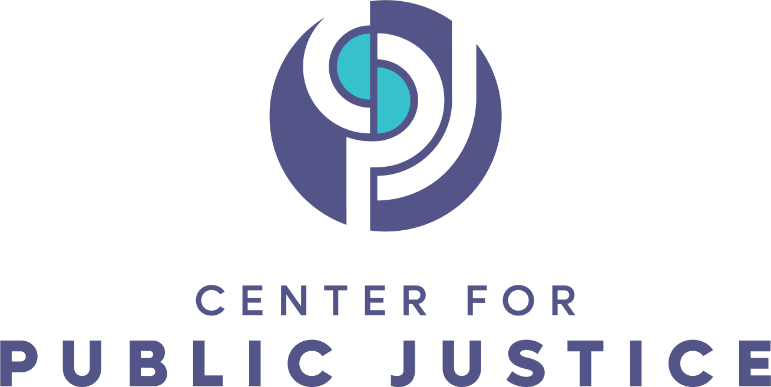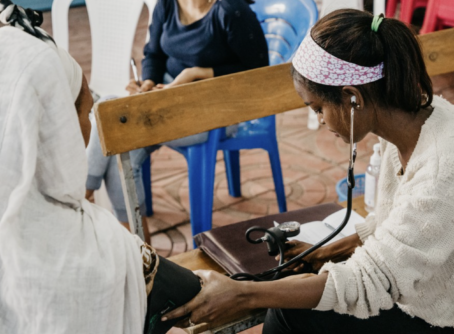
As the world navigates the lingering effects of the COVID-19 pandemic, it is vital that we address the “shadow pandemic” – a startling rise in the online sexual exploitation of children (OSEC). Congress has the opportunity to pass the End Network Distribution (END) of Child Exploitation Act this year to give law enforcement much needed time to respond to this horrific crime and identify children who are in situations of exploitation. If the last few years are any indicator, it is vital for our legislators to take action to combat OSEC now. In 2020, school closures and public health lockdowns created the perfect storm for increases in online sexual exploitation, as both children and offenders spent more time online and vulnerable children were confined at home, often with their traffickers.
The pandemic has inarguably, and continues to have, exacerbated conditions, further fueling online child sexual abuse and exploitation.
Throughout that year, governments and media around the world reported a surge in online violence against children. More than 21.7 million reports of suspected child exploitation to National Center for Missing & Exploited Children (NCMEC)’s CyberTipline were made in 2020 — which was, at the time, the highest number of reports ever received by NCMEC in a single year. The eSafety Commissioner, Australia’s national independent regulator for online safety, recorded an 86 percent increase in image-based abuse reported to its office over the three weeks preceding April 9, 2020. The Australian Federal Police (AFP) and the Australian Center to Counter Child Exploitation (ACCCE) observed the emergence of child abuse forums established as a result of COVID-19 stay-at-home measures. Australian media also reported that child sexual abuse sites crashed during the pandemic due to the increased volume of traffic. In April, May and June 2020, reports to the ACCCE increased by 122 percent compared to the same period of the previous year. These trends are not limited to the U.S. and Australia.
In March 2020, Europol reported significant increases in the downloading of child sexual exploitation material (CSEM) in Spain and attempts to access CSEM websites in Denmark. Not too much later — in July 2020 — Europol announced a “massive investigation” in Italy combating online child sexual abuse. The same month, Germany reported on a vast investigation involving 30,000 suspects involved in production and sharing of child sexual exploitation, leading to the largest such prosecution in German history involving children as young as three months old.
These data points highlight the emergence of a disturbing international trend in the early days of the pandemic that reflects the scale of this growing problem of exploitation and abuse. The pandemic has inarguably, and continues to have, exacerbated conditions, further fueling online child sexual abuse and exploitation. Livestreamed abuse has seen a particular boom in popularity, with Europol warning that “livestreaming of child sexual abuse increased and became even more popular during the COVID-19 pandemic. According to Interpol, livestreaming for payment is increasing. In September 2021, the U.S. Financial Crimes Enforcement Network (FinCEN) issued a Notice to its financial sector members to call attention to an increase in online child sexual exploitation, including the production of CSAM in part due to “livestreaming.” FinCEN reported a 147 percent increase in online sexual exploitation-related suspicious activity report filings from 2017 to 2020, including a 17 percent year-over-year increase in 2020.
The risk is further revealed by a 2021 survey by Protect Children of dark web CSAM users, which found that 45 percent of respondents said they viewed livestreamed child sexual abuse. EUROPOL’s Serious and Organized Crime Threat Assessment 2021 reported that the number of reported incidents involving live distance child abuse has steadily increased in recent years and “intensified” during the pandemic. Meanwhile, the recently-released Global Threat Assessment Report 2021 by the WeProtect Global Alliance regarded the COVID-19 pandemic as an “undeniably one contributory factor”.
As of 2021 alone, NCMEC received 29 million reports of suspected child sexual abuse material (CSAM) to the CyberTipline, meaning about 85 million images, videos, and other related files of children potentially experiencing exploitation and abuse were reported.
Under federal law, NCMEC acts as a clearinghouse for suspected online exploitation material. The organization’s staff work to route CyberTips to the appropriate law enforcement agency. A CyberTip is an image or video of an actual child who is potentially experiencing sexual exploitation and abuse. Each report that is not acted on results in the potential loss of documentation that could help identify that child and remove them from a situation of exploitation. The deluge of reports NCMEC is receiving has been highlighted more effectively in the media and broader culture. What hasn’t been widely understood is how the number and frequency of reports is impacting law enforcement officials who are responsible for responding to these tips and getting children out of harm’s way. Under current U.S. regulations, law enforcement officials are expected to investigate cases within 90 days of CyberTipsubmission. Once that timeframe passes, the entity who filed the report is no longer required to retain documentation. With an overwhelming number of regular reports of online sexual exploitation and abuse of children, law enforcement officials are simply not able to investigate all cases.
Governments should work closely together with their foreign counterparts, multinational partners, civil society, and the technology sector to comprehensively address the online sexual exploitation of children.
Governments should work closely together with their foreign counterparts, multinational partners, civil society, and the technology sector to comprehensively address the online sexual exploitation of children. Since 2011, International Justice Mission (IJM) has partnered with the Philippine government, international law enforcement, and NGOs to combat the trafficking of children to create child sexual exploitation materials (called “TCSEM”), especially via livestreamed video. In this crime, children are sexually abused by traffickers who then spread or sell images or videos of the exploitation online – even livestreaming the abuse for perpetrators to direct in real time from anywhere in the world. IJM has firsthand experience supporting law enforcement responses to CyberTipline reports in the Philippines, Malaysia, Nigeria and Ghana, so that more of these reports result in actual rescues and arrests. These kinds of partnerships are essential to getting children who are being abused out of harm’s way, along with catching traffickers and prosecuting them under the law.
Government also has a role to play in passing new and enhanced legislation to protect children from online sexual exploitation. In the U.S., a flurry of legislation at the intersection of online exploitation, technology, and child safety has been introduced in the 117th Congress. A legislative focus on these issues is very welcomed – but the challenging nature of balancing privacy and child protection in these conversations has in some ways resulted in a lack of attention on targeted solutions to acute issues, like a proposed measure to help law enforcement better manage the backlog of CyberTipline reports. The End Network Distribution (END) of Child Exploitation Act amends existing statutes created to protect children from exploitation and abuse by doubling the period time online service providers are required to keep content submitted to the CyberTipline – from 90 to 180 days. This small change would require technology companies to preserve critical report data for longer periods of time, making it easier for investigators to identify and remove victims from harmful situations and bring offenders to justice.
While Congress works on broader solutions to curbing the epidemic of online sexual exploitation of children, the END Child Exploitation Act offers a glimmer of relief to law enforcement in the form of much needed additional time to sort through the fast-growing volume of CyberTipline reports they are flooded with. We hope this bill can be a momentum builder for legislators and advocates who are tirelessly working to protect children from exploitation online.
In the Philippines, the trafficking of children to create new CSEM continued during the pandemic – but so has the collective and powerful response of law enforcement and government actors. During the lockdown in the Philippines, collaborations among domestic and foreign law enforcement, in partnership with IJM, has led to 126 Philippine law enforcement-led operations that rescued and safeguarded 432 victims and at-risk individuals, and arrested 76 suspected OSEC traffickers. In one such case, 14 victims – 13 of whom were minors – were safeguarded during an operation in the southern archipelago of the Philippines. The Philippine Department of Justice also secured three convictions against OSEC traffickers through virtual proceedings.
This much is clear – when it comes to addressing online exploitation of kids, the status quo is unacceptable. We can and should be doing more to protect children who are vulnerable to online exploitation and abuse.
This much is clear – when it comes to addressing online exploitation of kids, the status quo is unacceptable. We can and should be doing more to protect children who are vulnerable to online exploitation and abuse. Technology companies can be more proactive in implementing available technologies to detect, review, and report CSAM on their platforms – tools of this nature, like Safer by Thorn, already exist and should be deployed at scale. Parents, caregivers, and organizations that work with children can be proactive in creating safe spaces for kids to disclose sexual abuse and receive the resources they need to heal – RAINN recently released “Lean On Me”, a free 5-part video resource with must-known information on this difficult topic for parents and caregivers. All should take concerted, coordinated action to better support victims, promote accountability and transparency by the tech industry, and ensure that offenders will receive sentences that reflect the seriousness of their crimes. Passing the END Child Exploitation Act is a crucial first step in the right direction.
Nate King is the Director of Congressional Affairs for the International Justice Mission (IJM) and a McCain Institute Global Leader.





